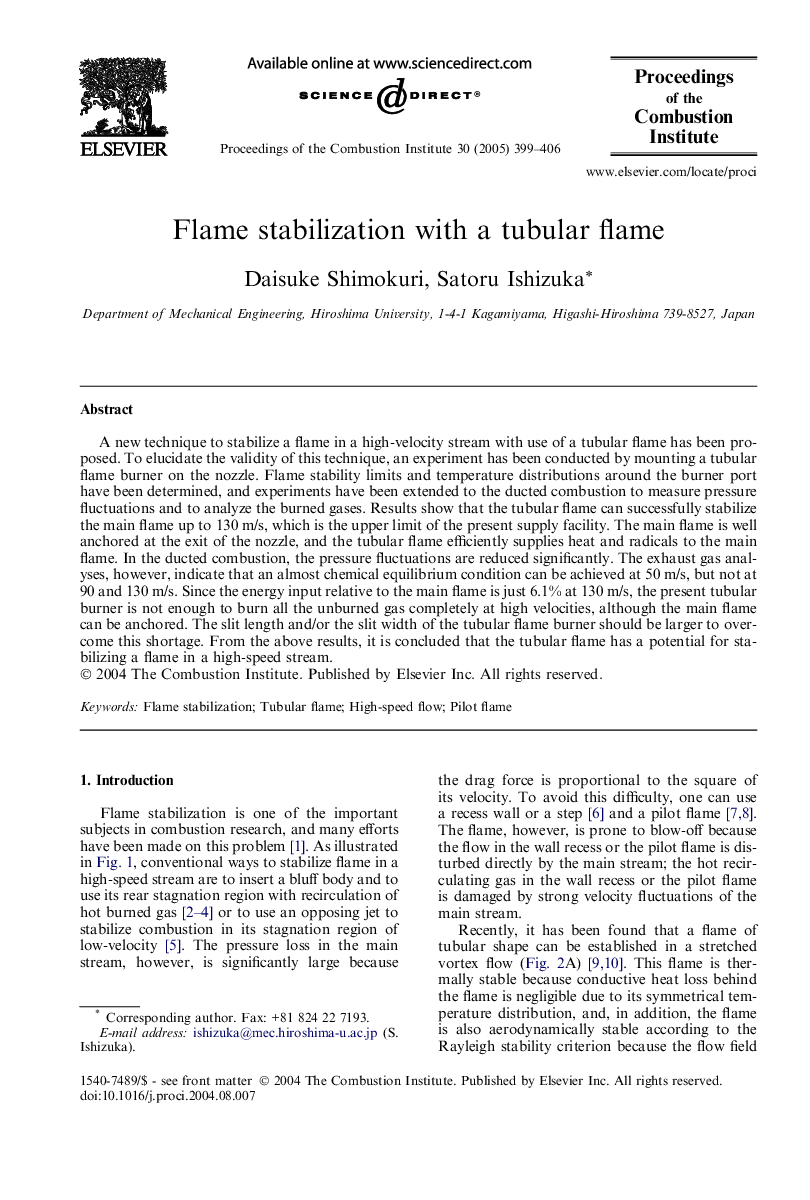| Article ID | Journal | Published Year | Pages | File Type |
|---|---|---|---|---|
| 9637359 | Proceedings of the Combustion Institute | 2005 | 8 Pages |
Abstract
A new technique to stabilize a flame in a high-velocity stream with use of a tubular flame has been proposed. To elucidate the validity of this technique, an experiment has been conducted by mounting a tubular flame burner on the nozzle. Flame stability limits and temperature distributions around the burner port have been determined, and experiments have been extended to the ducted combustion to measure pressure fluctuations and to analyze the burned gases. Results show that the tubular flame can successfully stabilize the main flame up to 130Â m/s, which is the upper limit of the present supply facility. The main flame is well anchored at the exit of the nozzle, and the tubular flame efficiently supplies heat and radicals to the main flame. In the ducted combustion, the pressure fluctuations are reduced significantly. The exhaust gas analyses, however, indicate that an almost chemical equilibrium condition can be achieved at 50Â m/s, but not at 90 and 130Â m/s. Since the energy input relative to the main flame is just 6.1% at 130Â m/s, the present tubular burner is not enough to burn all the unburned gas completely at high velocities, although the main flame can be anchored. The slit length and/or the slit width of the tubular flame burner should be larger to overcome this shortage. From the above results, it is concluded that the tubular flame has a potential for stabilizing a flame in a high-speed stream.
Related Topics
Physical Sciences and Engineering
Chemical Engineering
Chemical Engineering (General)
Authors
Daisuke Shimokuri, Satoru Ishizuka,
